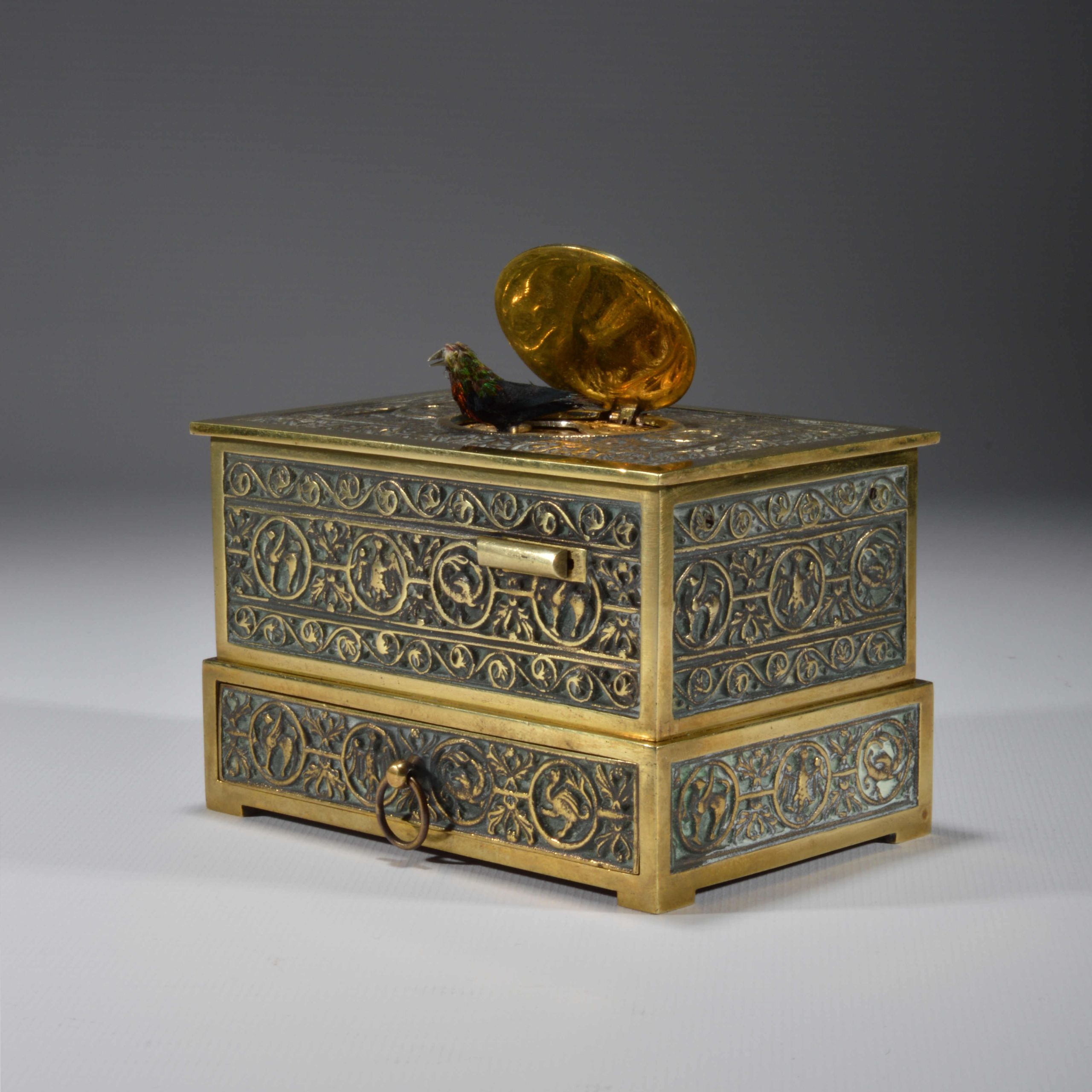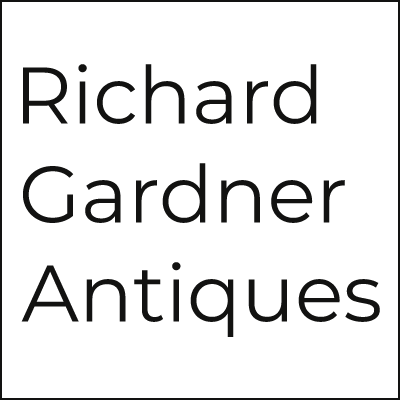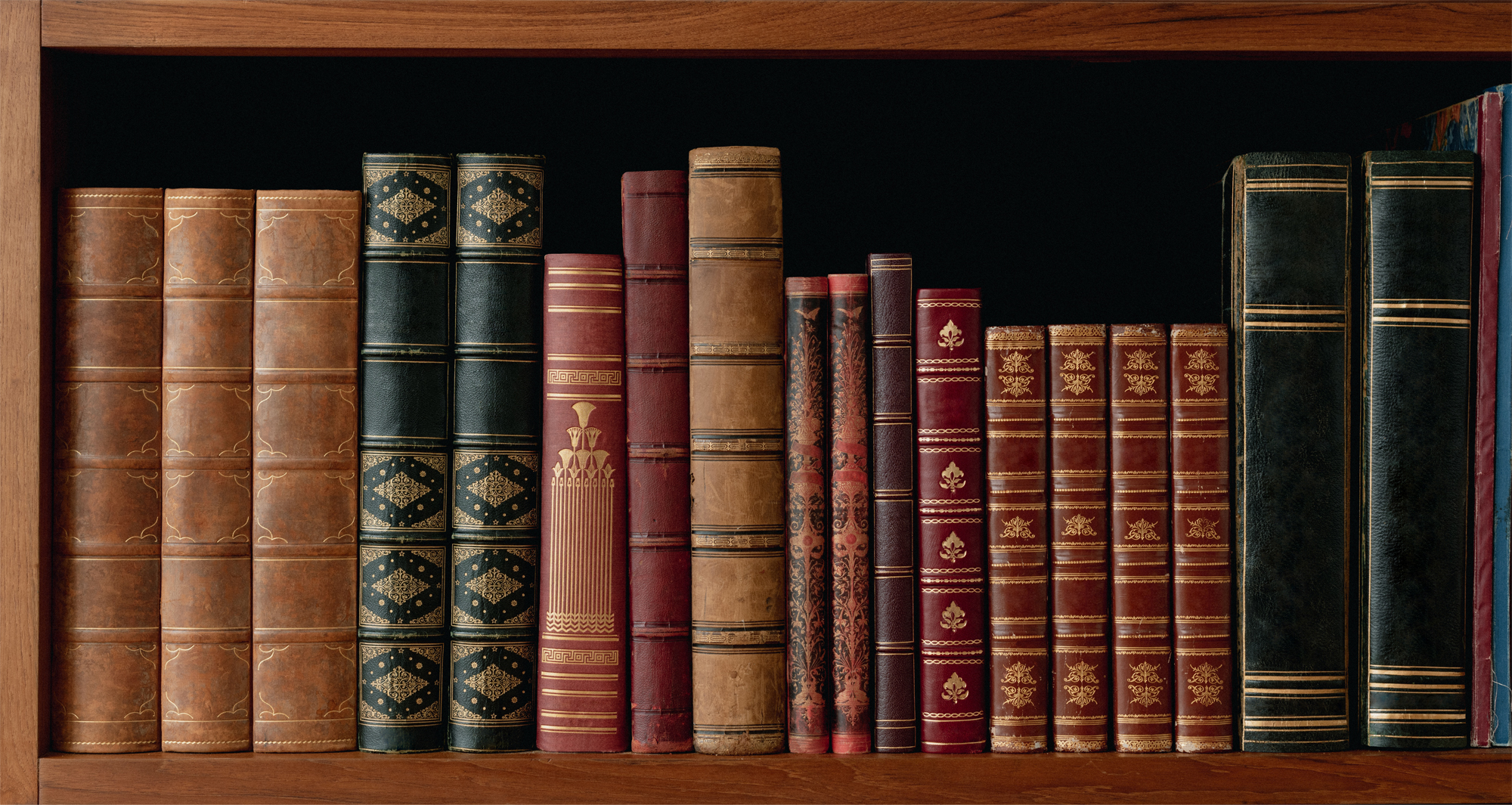Antique Singing Birds
Singing bird automatons – an appreciation
 International antique automata specialist Laurence Fisher discusses the popular appeal of these marvellous feats of style and technical engineering.
International antique automata specialist Laurence Fisher discusses the popular appeal of these marvellous feats of style and technical engineering.
Why are antique singing bird automatons having a big impact on today’s audience?
Perhaps it is because these fine and rare examples are seen only occasionally, the result has in the past lead to a somewhat specialised market. With increasing exposure in the media, interest has rocketed and having studied this area of antiques for quite some time, it is clear that the appreciation we give them is simply an echo of the deep technical understanding and the unique grasp of recreating true life that the makers had when they were being designed and made.
Their appeal can be exciting, particularly to those who have not seen one in action before, revealing that in life and certainly within the world of early animatronics, there are still areas of this sector which continue to be fascinating and highly enjoyable.
From the avid collector and connoisseur, to the novice who wishes to seek out something completely different, viewers with a keen eye and ear usually stop and seriously consider how such an object which contains no real singing bird can look and sound just like the real thing.
For some, appreciation is a term used to describe a rise in value in an object or other asset. For most, it is the underlying pleasure that we realise from an object or asset, so it is good to learn that both is true in the case of fine antique singing bird automatons. Especially as both antique automatons and antique clocks are entirely free of capital gains tax so you can really have your cake and eat it too!
There are many individual types, and it should be noted that strictly speaking, every single singing bird automaton is different from another even if in some small way. The final selection for any buyer is put down to personal taste only.
Put briefly, the singing bird in cage is the best known of the bird automatons. A bird, or in some cases more than one bird perched within the domed cage and on command – by sliding a hidden lever or inserting a pre-decimal coin springs to life by actually singing, moving the beak in time with the chirps, bobbing the tail feather up and down and moving its head from side to side. Finished with a sprig of silk flowers and leaves, the cage has a hoop in which to hang from a chain, or feet for a table position.
The most loved version of the singing bird has to be the singing bird box. With all the virtues of the cage model and more, our feathered friend is totally hidden from view initially. The viewer is invited to inspect the beautiful case – usually with stunning enamels, painted studies to the lid, or perhaps fine tonal shades of tortoiseshell, occasionally, precious metals such as silver, gold and platinum highlighted with pearls and even diamonds. The singing bird box simply as an object is beautiful to look at, even before any action occurs.
The bird appears by sliding the actuation button or slide to the right, ( if on the front of the box) or by pulling a button if it is on the side of the case. Captured in perfect miniature, the bird not only does all a caged bird does, but also moves the entire body from side to side with some of the early types also moving the head independently. Incredible.
It may surprise many to know how early that these singing birds were made. The earliest known piece to operate to the spring-powered pneumatic system was circa 1780. This was an exciting time for the more advanced horologists working in Switzerland , France and England . The design and manufacture of exceedingly accurate equipment to cut cogs, bushes, pinions and chains meant that for the first time the more serious and complex movements could be executed. Obviously a fun element was involved – their use was nothing more than a superb curio ortoy, made by the best and sold to the very rich; often to the European and Eastern aristocracy.
In the 1780s, the boxes made were often tiny, about 3 inches across and cased in solid gold, the bird had five separate movements, all synchronised to the birdsong before lowering horizontally and disappearing beneath the lid. The early masters such as Jaquet Droz, Jacob Frisard , Francois Piquet and Maillardet were not bettered even by the next generation. Although they had a really good try.
Charles and Jacques Bruguier working in the early 19th century are considered the ‘gold standard’, as there are more surviving examples than there are of the earlier period. But the prize for manufacturing and commercial success has to be awarded to the later French masters such as Blaise Bontems and Jean Phalibois. They took the 19th and very early 20th centuries by storm, creating pieces of such clever refinement, whilst paying close attention to the past design feats and engineering subtle improvements. One such feature was the paused singing bird which sang, stopped altogether then sprang back into life on its own, again and again. Once more, they were made by the best and offered to the rich.
Birds were often feathered with Kingfisher or Hummingbird plumage. The colours and tone work perfectly but the feathering process is an incredibly difficult and skilful task. The layering must be perfect and the final finish totally realistic. I have tried to undertake this process and after a few goes I concluded that I was simply wasting materials. True skill takes years to perfect and when Jean Phalibois’ examples in cages are concerned, he went one stage further and used full beak-to-tail feather taxidermy birds.
I am often asked if the birdsong is a recording, due to the stunning and most realistic performances. In a way, yes they are. The late 18th century song cams were sometimes cut to a profile first achieved by the maker taking a stroll in woodland, then on hearing a sweet melody from the feathered tree dwellers, hastily drawing with a pencil on paper a rough score to denote pitch and key. This was then transcribed in the workshop onto a circle of brass and then the cam was cut and tested. For the likes of Bontems, Phalibois, Griesbaum and Marguerat, they had each developed their own catalogue of music, with all cams pre-cut. Griesbaum had the widest selection with over fifteen different melodic songs for his wares.
It is unknown exactly how many antique singing birds survive in the world today. Looking through international sales and private stock listings of the few retailers in the world which specialise in this field over the years, a conservative number were made and a smaller number survive.
The key to survival is correct servicing and conservation. A novice attending to the needs of an important singing bird box or cage would be best advised to take direction from a restorer whose experience would produce a successful outcome. From the dressing of the bird to the movement, it must be treated with the utmost respect. One false move would impact on its monetary value, its functioning and its quality forever. So when one finds a variety of singing birds in one establishment it is likely that each piece has been dealt with correctly and responsibly.
Perhaps what is most amazing and fascinating about this subject is the skill and craftsmanship of these geniuses using just hand made tools and limited power, often only that generated by their own hands or feet. Many movements I have handled tell a very specific story about how the maker designed and made them. Just as with the tool marks left on the stone blocks which form part of the most famous landmark buildings in the world, the same feature is seen on most movements of singing birds, certainly the early ones. The odd pillar with one more screw thread revolution on the centre, the fine paper bellows with the folds still bearing pressure from the maker’s fingertips – these are aspects of the piece that were important to the maker and can be of great interest to the collector too.
It is unfortunate that there are few workshops today that can exhibit the same level of skill. True, the technology of machinery has improved many times over; late 18th/early 19th century craftsman had only a small selection of hand tools, a small wooden bench and a couple of candles after daylight faded. They had hands which knew what they were doing almost without the use of their eyes.
They had the ability to accomplish the seemingly impossible within hours and some had worked out in their mind how things should be constructed and how the final object should move without ever committing designs to paper. They had ‘Mozart brains’. Maybe, in a few centuries time, there are some elements to the design which may need to be reverse- engineering to decide how it was possible to make them. What a thought.
Gone are the days when art and antiques were only housed in darkened rooms, lit only by candlelight. Bird cages are often used in interior design projects by the best names. They are pretty to look at and can be placed anywhere easily. They provide a great talking point and most people love a singing bird and those who have never come across one are almost always entranced by them. It has been said that the gift of a singing bird automaton is the perfect addition within a home where the owner appears to have everything.
The world of antique automata is on the whole a magical place. The modern world, with computer this and special effect that can hold the attention of viewers for a time, but we must not forget that for almost two hundred years, the world has been gripped by the antique automaton.
True magic is creating a slice of life so unsettlingly real, from metal, wood and paper and, Richard Gardner Antiques reveals a selection of the magic for the world to see, enjoy and purchase.
In a corner of Emsworth the magic is very much alive…
To see a selection of singing birds in cages and boxes, plus musical boxes, currently in stock, please click here


